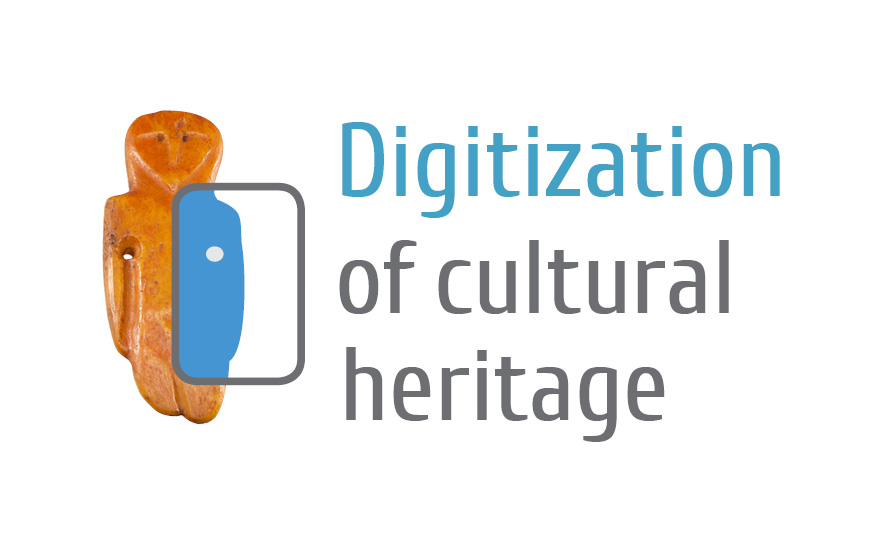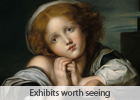-
-
LITHUANIAN FOLK WOODCUTS
The art of the woodcut is one of the most widespread fields of folk creation. Professor P. Galaunė, a long-standing director of the M. K. Čiurlionis Gallery, was an ardent collector and researcher of folk art, he initiated the first exhibition of folk woodcuts in 1927. M. K. Čiurlionis National Museum of Art houses over 300 Lithuanian folk woodcuts of the 18th – 19th centuries. Such works decorated the interiors of homes and churches, cemetery chapels, the insides of chests. In the course of history, wars and fire destroyed a great many of folk art articles, luckily, a certain number of them had survived up to the present day.
Since the 18th century, wood carvings were mainly printed in Samogitia, their authors were god carvers, scapular makers, landless or poor peasants, who copied the prayer book texts and images of the Saints, usually without inscribing their names or initials. The names of only several carvers are known: Kajetonas Grigalauskas, Stepas and Tadas Jurevičius, Stepas Kuneika, Tomas Ostrauskas, Samuelis Stefanovas, Aleksandras Vinkus. During the time of the Press Ban, inscriptions were mainly engraved in Polish.
It is supposed that folk artists learned the secrets of wood-carving at the monasteries of Kretinga and Samogitian Calvary, the printing houses in Vilnius or simply from each other. They used planks of branchless trees and carved both sides. When going to religious festivities, carvers used to take cliches and paint with them so that they could print more images in case they ran out of them. M. K. Čiurlionis National Museum of Art houses the only cliché of ''The Crucifix'', carved by Stepas Kuneika.
Woodcarvers searched for subject matters in different sources: the prayer book illustrations, pictures depicting the episodes from the Saints' lives, copies of works by European artists A. Dürer, P. P. Rubens, P. Veronese, R. van der Weyden, engraved in copper by foreign masters who worked in Vilnius in the 17th century. Of mention could be such favourite topics – Angel the Guardian, the Creation of Paradise, episodes from the life of the Blessed Virgin Mary and Jesus Christ, images of the Saints, scenes from the Last Judgment. There were also carvings meant to commemorate the establishment of the sobriety in Lithuania in 1858.
Apart from rather common and familiar to the Lithuanians scenes such as the Gate of Dawn, Loreto or Our Lady of Sorrows, folk woodcarvings stored the M. K. Čiurlionis National Museum of Art picture more rare images of the Blessed Virgin Mary of Hansfeld, Okulick, Różanystok, Zdieschev, Sokolsk, while the scenes of Teaching, the Annunciation, the Assumption, and the Coronation of the Blessed Virgin are quite frequent. The storyline of Pieta depicting Our Lady with the dead Son on her knees was also among the most favourite ones.
Woodcuts depict the life of Jesus from birth to death. One can see the scenes of the Adoration of the Magi, the Flight into and from Egypt, the Baptism of Jesus, the Last Supper, the Martyrdom, and the Crucifixion. Among frequently carved are images of Jesus the Nazarene, Christ among the instruments of torture, Christ carrying the Cross, and the Crucifix. In other carvings we can see images of Jesus as the Savior of the World, or the Blessed Heart of Jesus surrounded by St. Anthony of Padua, St. Casimir and St. Archangel Michael.
In the collection of folk woodcarvings of the 18th –19th centuries in the M. K. Čiurlionis National Museum of Art the most popular Saints are – St. George, St. Ann, St. Barbara, St. Catherine, St. Helena, St. John of Nepomuk, St. Joseph, St. Anthony of Padua, St. Casimir, St. Nicholas of Myra, St. Michael the Archangel, St. Matthew, St. Peter and St. Paul, St. Jacob, St. Philip, St. Tekle. Less frequent, or occasional are St. Sophia with Daughters, St. Petronilla, St. Ignatius of Loyola, St. Apollonia, St. Dorothea, St. Mary Magdalene, St. Rosalia, St. Lawrence, St. Francis of Assisi, St. Vincent Ferrer, St. Vincent de Paul, St. Judith, St. Onuphrius the hermit, St. Agatha.
Lithuanian woodcarvers did not engage in copying exact images of professional art, therefore their works acquired the mythopoetic character and archetypes of primitive thinking. They have features of a frontal composition, plane and decorative image or scene, stylized drawing, stumpy, often deformed proportions of figures, static anatomy, and schematic movements. Primitive and baroque forms of ecclesiastical art are intertwined in the stylistics of colour and ornamentation, while the psychological character of the personages is the closest to the popular folk point of view. Thus, a self-educated Lithuanian artist, although without professional artistic training, combined in his works the ancient Lithuanian worldview, the peasant folklore with canonized representations of Christianity and deep-rooted European culture.
Vilma Kilinskienė
-
Virtual Exhibitions






